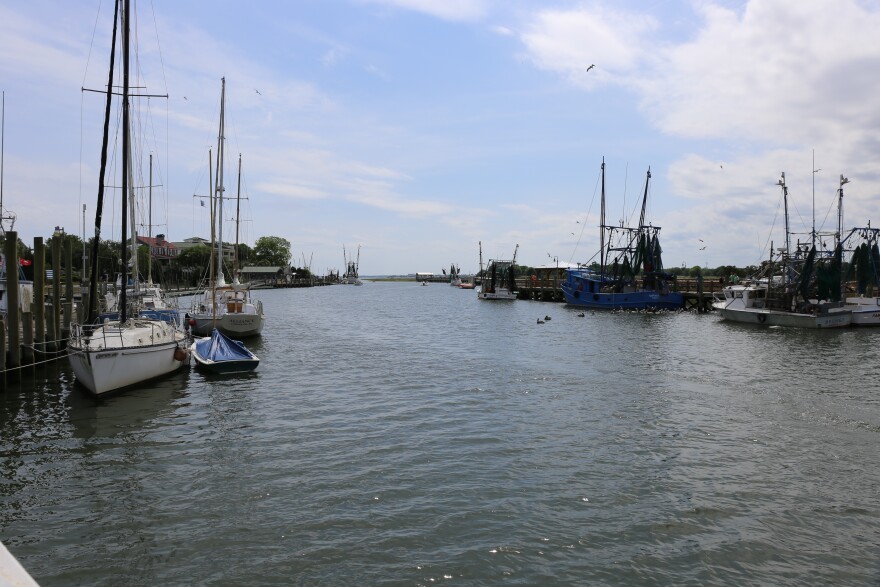Bird calls at the Shem Creek docks mean the shrimp boats are back.
Shrimper Phuoc Tang and his crew are hauling about 1,000 pounds of white shrimp in colorful plastic fishing baskets off his boat and onto the dock.
“We did good today,” he said.
Tang is excited because this is projected to be his best season. According to state scientists, 2016 is expected to yield the biggest roe white shrimp crop in37 years.
South Carolina Department of Natural Resources Marine Scientist Steve Arnott attributes the optimistic forecast to weather conditions. He said the influx of freshwater from October’s floods moved many of the crustaceans from the upper estuaries into the waters where the shrimp boats are.
“Since the flood that general story has continued,” Arnott said. “We are seeing very high numbers of shrimp.”
He adds the warm winter was also a factor. Scientists at the National Oceanic and Atmospheric Administration and National Aeronautics and Space Administration say 2015 was earth’s hottest year since they began record keeping 135 years ago.
“Shrimp survival is very dependent on that temperature effect,” he said.
According to Arnott, shrimp food such as plankton, worms, and larvae were also brought down with the flood waters.
“They acted a little bit like a fertilizer within estuary,” he said. “We think that is probably an extra thing that has boosted or helped them sort of growing and surviving.”
With plentiful supply, come lower prices.
Data from Urner Barry, a company that tracks food prices, shows five pound blocks of domestic white shrimp are a few dollars cheaper than they were this time last year.
Shrimpers like Warren Rector, also known as Bubba, are hoping to sell as much as they can from small markets right off the dock. He sells a portion of his daily catch to customers from a small brown shack with a tin roof just a few feet away from his boat.
Rector said a few restaurants that buy shrimp directly from him, “But most of our stuff is just repeat business that people have been buying from us.”

He is cautiously optimistic about the outlook for this season. Leaning on a wooden pole with a beer in hand, the 69-year-old shrimper warns he doesn’t pay attention to the talk of a record year.
“I don’t never predict,” Rector said. “Don’t ask me to do it, because all you doing is jinxing yourself.
He said he’ll continue to take one day of the shrimp season at a time.


